Word to the Wise: Assessing problems and mitigating risks when drill planning
February 8, 2022
Each week, XI Technologies scans its unique combination of enhanced industry data to provide trends and insights that have value for professionals doing business in the WCSB. If you’d like to receive our Wednesday Word to the Wise in your inbox, subscribe here.
With commodity prices rising, so is the prospect of a surge in drilling activity. As companies scope and plan their prospective drill programs, there’s a lot of factors to consider as to where/what wells to drill. In this week’s post, we’ll focus on one of those factors: Drill Problems – Risk Avoidance and Mitigation.
Looking back at the last three years of drilling in Alberta, we ran some numbers using XI’s proprietary Drilling Database and various data-mining techniques to get a sense of where drill problems are most prevalent.
What is considered a “drill problem” you ask? Good question…for this article, we’re considering all AER reported Blows/Blowouts, Kicks, Circulation Losses, and Water Flows. Also included are incidents of Stuck Pipe, Fishing, and Circulation Losses.
Wells Drilled vs Wells Drill with Problems

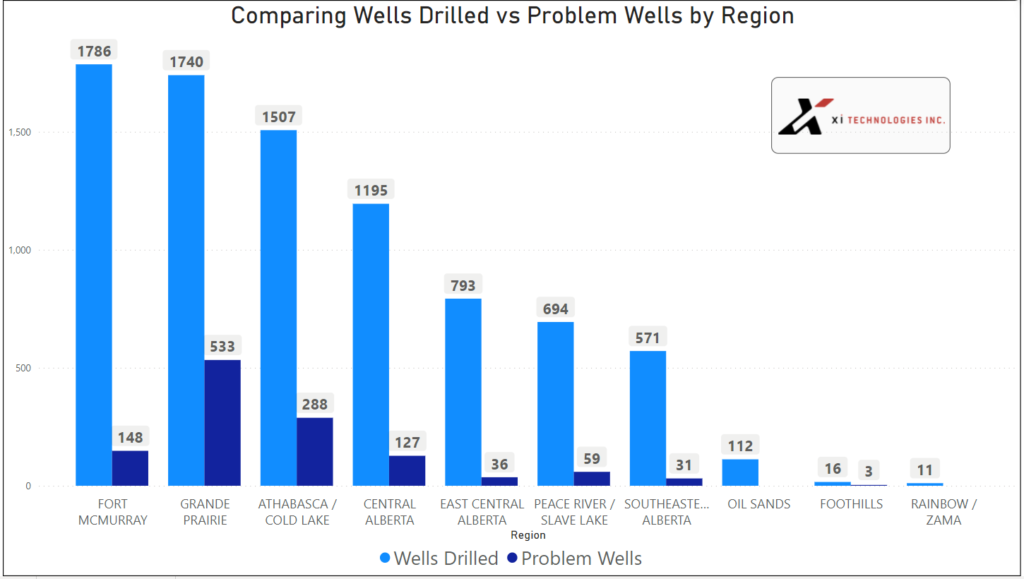
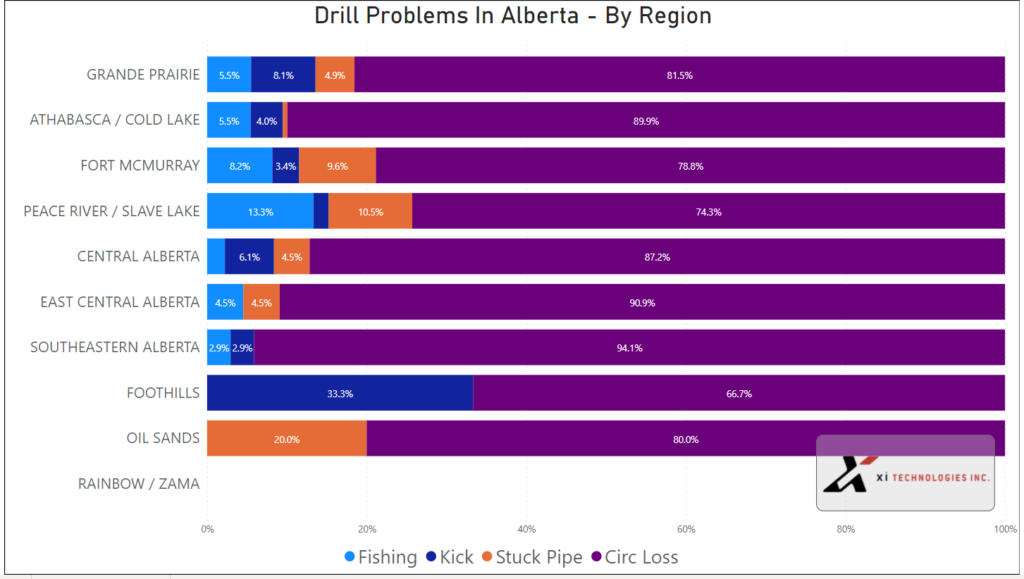
Deeper Dive into Drill Problems in Grande Prairie
We can see from the figures above that Grande Prairie is not only the second most active region in the province, but where operators are most prone to experiencing drill problems, most of which being circulation losses.
Let’s take a closer look…
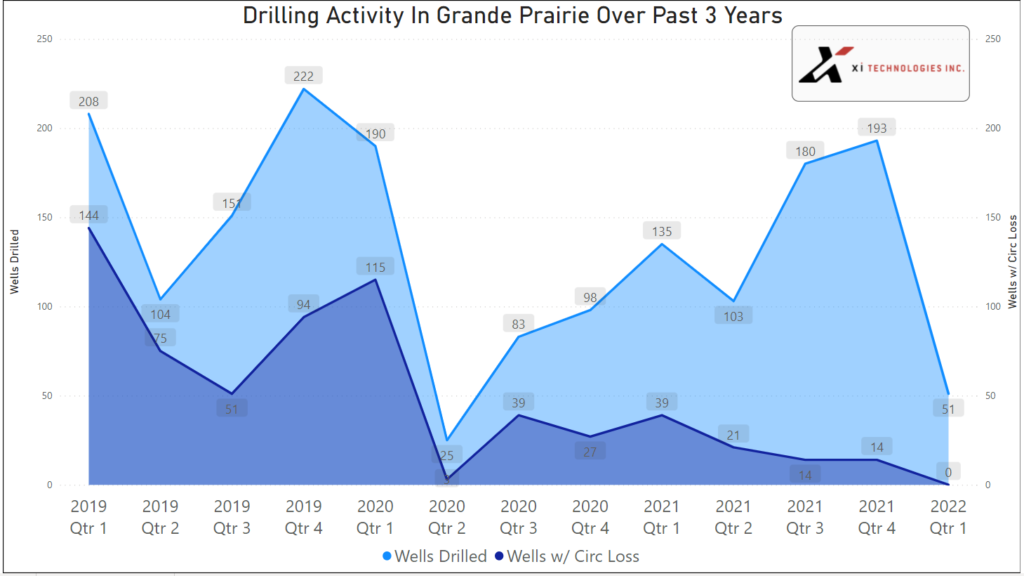
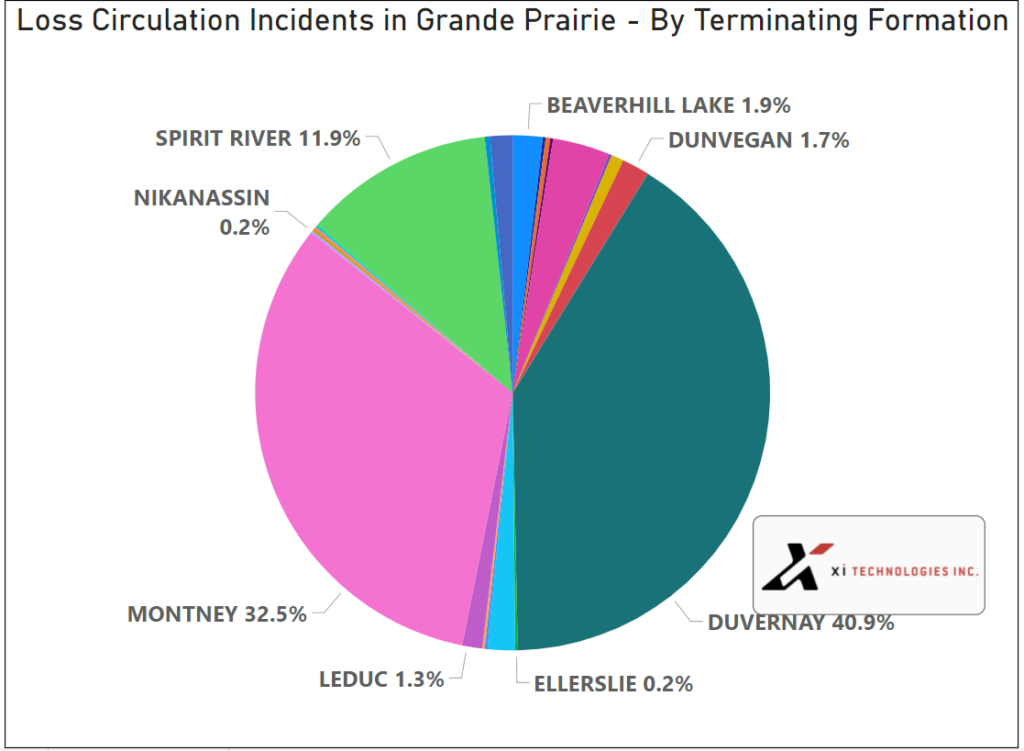
**Note: This depicts the terminating formation of the well, not the formation where the problem occurred in during drilling.
Click here to download an interactive dashboard of the above data.
Taking an Even Closer Look
It’s one thing to be aware of historical drill problems, it’s a whole other ballgame to understand the impact of those problems. A circulation loss on a well could amount to ½ day of NPT (non-productive time), or it could amount to 3+ days of downtime and mitigation procedures.
XI identified 115 Montney wells drilled in and around Grande Prairie that experienced drill problems. In the drill curves shown below, you can see the significant impact these issues had on their overall drill times.
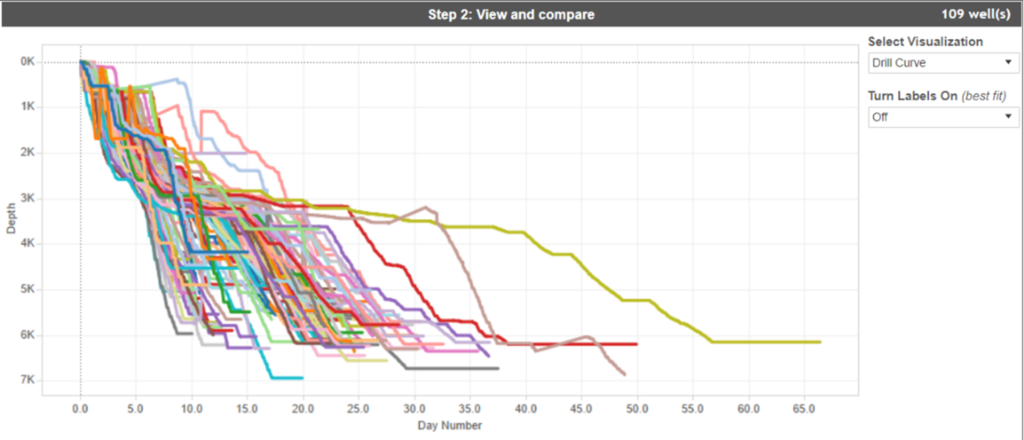
Those 115 wells represent a broad spectrum of wells across a wide variety of depths.
Let’s narrow in a bit further…

So, what next?
For some this may be all the information they need, depending on the question being asked/decisions to be made). For others, this simply opens yet another door and raises new questions. To follow the rabbit further down the hole, it’s a matter of reading into these wells.
Unless these are their own drills, an operator would have to hunt down the drill records for each well they want to investigate:
- What caused the problem?
- In what formation(s) are these problems occurring?
- What mud system/materials were being used?
- What other contributing factors might have led to the issue?
- etc.
- How did they resolve the problem?
- How severe were the actions taken to fix the issue?
- What steps had to be taken? Tools/equipment required?
- How much material was needed?
- etc.


Regardless of how one gets their data, historical knowledge is critical to successful drilling in any area. Being aware of previous drilling complications helps you prepare and strategize how to best deal with them.
XI Technologies offers some of the most robust drilling data available with OffsetAnalyst. To learn more about how our software can help you improve drilling research and performance, visit our website or contact us today.